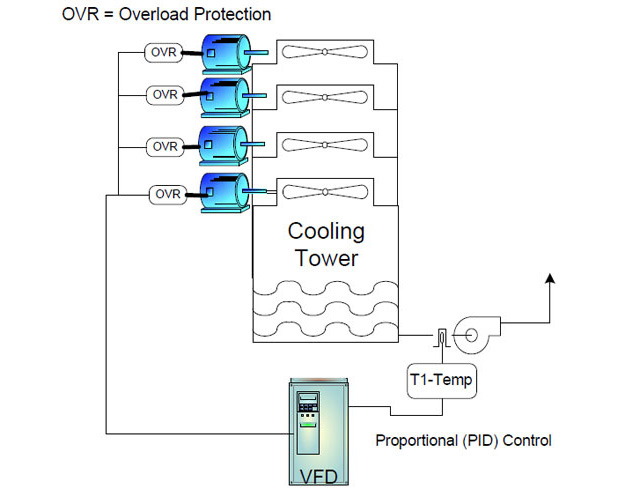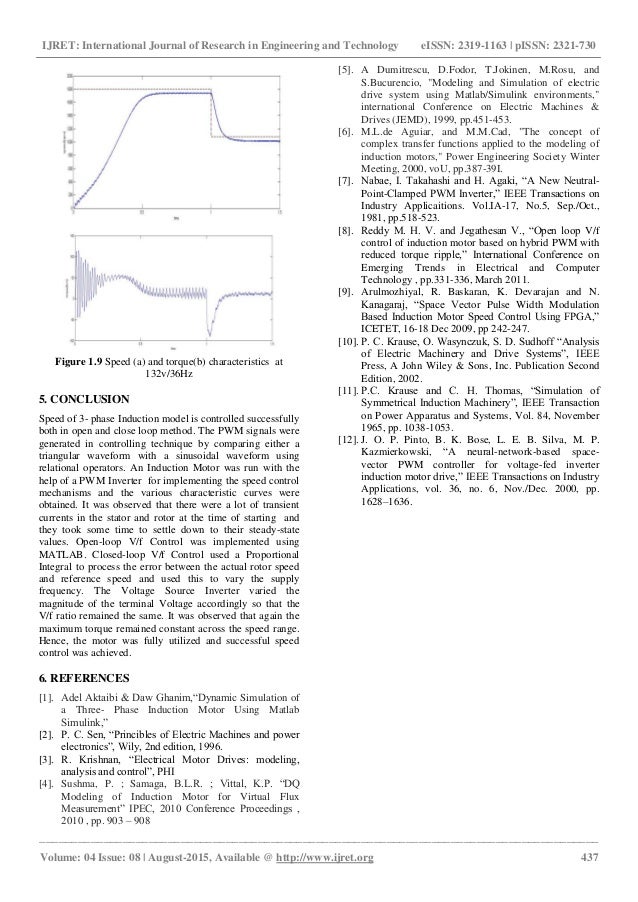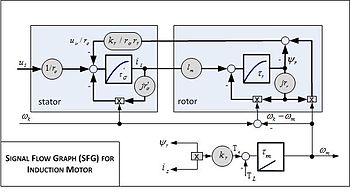
The performance of both the speed and torque is promoted by a modified PI controller and V/F scalar control. A scalar control is a simple method and it's operated to control the magnitude of the. Expansion joint /control joint- method 1. StraightFlash™ VF non flanged window detail (head). Increase efficiency. In this system, the scalar control (V/Hz) of induction motor experiments with and explores the use of speed control. The user can quickly start evaluating the performance of the V/Hz system with this method. This application note covers the following:. A theoretical background on scalar motor control principle. This technique is popularly known as VF control. Generally used for open-loop systems, VF control caters to a large num- ber of applications where the basic need is to vary the motor speed and control the motor efficiently. It is also simple to implement and cost effective. A variable-frequency drive is a device used in a drive system consisting of the following three main sub-systems: AC motor, main drive controller assembly, and drive/operator interface.: 210–211 AC motor. The AC electric motor used in a VFD system is usually a three-phase induction motor.Some types of single-phase motors or synchronous motors can be advantageous in some situations, but.
With scalar control, V/Hz tuning adjustments are used to provide a family of torque vs speed curves that are equivalent to the utility power torque vs speed curve over as wide a speed range as possible. The drive's operating point is at the intersection of the selected drive torque vs speed curve and the characteristic torque vs speed curve of the driven equipment.
Acceleration and deceleration ramp time adjustments are used to prevent acceleration and deceleration currents from exceeding safe limits. Current limit adjustments are used to reduce the speed of the motor rather than shut down in the event that the load torque exceeds the safe limit of the drive.
Current measurement can also be used to automatically trim various tuning adjustments to provide enhanced performance.

Properly tuned scalar drives with the best control enhancements can provide 150% of rated torque to overcome static friction at zero speed and to accelerate the load. They can also provide relatively smooth full torque operation at any set speed down to about 10% of base speed.

Vector control drives seek to dynamically regulate motor torque as directly and accurately as possible. Speed is regulated indirectly by providing exactly the torque required to operate the driven equipment at the desired speed. Vector control drives use a mathematical model of the motor to dynamically determine the values of the essential operating and control parameters. They are called 'vector control' drives because this analysis is based on a vector representation of current, voltage and magnetic flux.
One of the key elements of vector control is the analysis of the motor current. The current in an induction motor is the combination of a magnetizing current vector and a torque-producing current vector. Vector drives continuously monitor and analyze the motor current to determine what voltage to apply at any given frequency to produce the optimum magnetizing current.
Various drive designs implement vector control in different ways. Some manufacturers consider their designs to be sufficiently unique to be more appropriately identified by terms other than 'vector control.' The best performance is generally achieved by providing a shaft speed and/or position feedback signal, but 'sensorless' vector drives provide performance that is sufficient for many applications without using external feedback devices.
Vector drives, including sensorless models, can often provide significantly more than 150% of rated torque to overcome static friction at zero speed and to accelerate the load. They can also provide smooth full torque operation at any set speed down to zero speed or very close to zero speed. To reliably hold an overhauling load in position at zero speed, speed/position feedback is generally required. Vector drives provide excellent performance in terms of accurate static and dynamic speed regulation and rapid response to sudden changes in load torque. Vector drives can also provide torque regulation as an alternative to speed regulation.
VFD is a v/f drive, with only scalar control and it can not produce torque above the rated value.
In any motor application, the two criteria required are Torque and speed. There are two types of VFDs, v/f drives and vector drives. The latter can develop a maximum of 150-250% torque even at very low rpm. By providing a closed loop control for application like blowers, compressors, pumps, etc., savings could be achieved.
V/f Control Method Of Ac Drive
Use of a 5-7% AC inductor on primary side reduces generation of harmonics. Other advantages include smooth running by selecting acceleration, deceleration and regenerative-breaking parameters, etc.
ENERGY SAVERS vs VF DRIVES
ES cannot produce torque above rated value. It controls only voltage – the flux reduces with reduction in voltage. ES is meant only for part load operation. It is an electronic version of a simple autotransformer, except that ES can work in closed loop.
Part load efficiency in motors can be improved by reducing the voltage applied using ES rather than the more expensive VFDs. The principle behind this method is :
When the motor operates on a part load, it develops the required torque with a reduced flux; so the applied voltage can be less than the rated. Reducing the voltage causes reduction in iron loss (Iron loss ∞ V2) and therefore the motor efficiency improves; reduction in magnetizing current causes increase in PF too. In fact the motor can be operated at peak efficiency with any load, provided the exact required voltage is applied (in other words, by maintaining the slip at its optimum value). ES does this.

In contrast, a VFD also reduces voltage, along with frequency, and so the speed varies, and the load level varies too. In fact even ES is not essential to reduce the voltage; it can be easily done through an autotransformer(AT). Further, VFDs & ES cause harmonics, but AT does not. AT is much cheaper.
If it is essential to use an oversized motor, one can use AT to supply a matching voltage in case of part load operation.

MOTORS – OVERSIZING
Motors often need to be oversized to take into consideration the initial starting torque, and other unpredictable loads / torques, in rigorous mechanical applications. There are ways in which motors can be selected close to running load / torque conditions, by having fluid couplings / soft starters.
This should ideally be considered while designing the power train, ie the motor, couplings, gear-boxes, and finally the load.
In many applications, particularly in the steel industry, motors are rated much higher than the running load, to take into consideration stalling of the motor.
V/f Speed Control Method
If the motors are over sized for other extraneous reasons, and
1] Will run for greater part of the time at lower torques, and / or

The performance of both the speed and torque is promoted by a modified PI controller and V/F scalar control. A scalar control is a simple method and it's operated to control the magnitude of the. Expansion joint /control joint- method 1. StraightFlash™ VF non flanged window detail (head). Increase efficiency. In this system, the scalar control (V/Hz) of induction motor experiments with and explores the use of speed control. The user can quickly start evaluating the performance of the V/Hz system with this method. This application note covers the following:. A theoretical background on scalar motor control principle. This technique is popularly known as VF control. Generally used for open-loop systems, VF control caters to a large num- ber of applications where the basic need is to vary the motor speed and control the motor efficiently. It is also simple to implement and cost effective. A variable-frequency drive is a device used in a drive system consisting of the following three main sub-systems: AC motor, main drive controller assembly, and drive/operator interface.: 210–211 AC motor. The AC electric motor used in a VFD system is usually a three-phase induction motor.Some types of single-phase motors or synchronous motors can be advantageous in some situations, but.
With scalar control, V/Hz tuning adjustments are used to provide a family of torque vs speed curves that are equivalent to the utility power torque vs speed curve over as wide a speed range as possible. The drive's operating point is at the intersection of the selected drive torque vs speed curve and the characteristic torque vs speed curve of the driven equipment.
Acceleration and deceleration ramp time adjustments are used to prevent acceleration and deceleration currents from exceeding safe limits. Current limit adjustments are used to reduce the speed of the motor rather than shut down in the event that the load torque exceeds the safe limit of the drive.
Current measurement can also be used to automatically trim various tuning adjustments to provide enhanced performance.
Properly tuned scalar drives with the best control enhancements can provide 150% of rated torque to overcome static friction at zero speed and to accelerate the load. They can also provide relatively smooth full torque operation at any set speed down to about 10% of base speed.
Vector control drives seek to dynamically regulate motor torque as directly and accurately as possible. Speed is regulated indirectly by providing exactly the torque required to operate the driven equipment at the desired speed. Vector control drives use a mathematical model of the motor to dynamically determine the values of the essential operating and control parameters. They are called 'vector control' drives because this analysis is based on a vector representation of current, voltage and magnetic flux.
One of the key elements of vector control is the analysis of the motor current. The current in an induction motor is the combination of a magnetizing current vector and a torque-producing current vector. Vector drives continuously monitor and analyze the motor current to determine what voltage to apply at any given frequency to produce the optimum magnetizing current.
Various drive designs implement vector control in different ways. Some manufacturers consider their designs to be sufficiently unique to be more appropriately identified by terms other than 'vector control.' The best performance is generally achieved by providing a shaft speed and/or position feedback signal, but 'sensorless' vector drives provide performance that is sufficient for many applications without using external feedback devices.
Vector drives, including sensorless models, can often provide significantly more than 150% of rated torque to overcome static friction at zero speed and to accelerate the load. They can also provide smooth full torque operation at any set speed down to zero speed or very close to zero speed. To reliably hold an overhauling load in position at zero speed, speed/position feedback is generally required. Vector drives provide excellent performance in terms of accurate static and dynamic speed regulation and rapid response to sudden changes in load torque. Vector drives can also provide torque regulation as an alternative to speed regulation.
VFD is a v/f drive, with only scalar control and it can not produce torque above the rated value.
In any motor application, the two criteria required are Torque and speed. There are two types of VFDs, v/f drives and vector drives. The latter can develop a maximum of 150-250% torque even at very low rpm. By providing a closed loop control for application like blowers, compressors, pumps, etc., savings could be achieved.
V/f Control Method Of Ac Drive
Use of a 5-7% AC inductor on primary side reduces generation of harmonics. Other advantages include smooth running by selecting acceleration, deceleration and regenerative-breaking parameters, etc.
ENERGY SAVERS vs VF DRIVES
ES cannot produce torque above rated value. It controls only voltage – the flux reduces with reduction in voltage. ES is meant only for part load operation. It is an electronic version of a simple autotransformer, except that ES can work in closed loop.
Part load efficiency in motors can be improved by reducing the voltage applied using ES rather than the more expensive VFDs. The principle behind this method is :
When the motor operates on a part load, it develops the required torque with a reduced flux; so the applied voltage can be less than the rated. Reducing the voltage causes reduction in iron loss (Iron loss ∞ V2) and therefore the motor efficiency improves; reduction in magnetizing current causes increase in PF too. In fact the motor can be operated at peak efficiency with any load, provided the exact required voltage is applied (in other words, by maintaining the slip at its optimum value). ES does this.
In contrast, a VFD also reduces voltage, along with frequency, and so the speed varies, and the load level varies too. In fact even ES is not essential to reduce the voltage; it can be easily done through an autotransformer(AT). Further, VFDs & ES cause harmonics, but AT does not. AT is much cheaper.
If it is essential to use an oversized motor, one can use AT to supply a matching voltage in case of part load operation.
MOTORS – OVERSIZING
Motors often need to be oversized to take into consideration the initial starting torque, and other unpredictable loads / torques, in rigorous mechanical applications. There are ways in which motors can be selected close to running load / torque conditions, by having fluid couplings / soft starters.
This should ideally be considered while designing the power train, ie the motor, couplings, gear-boxes, and finally the load.
In many applications, particularly in the steel industry, motors are rated much higher than the running load, to take into consideration stalling of the motor.
V/f Speed Control Method
If the motors are over sized for other extraneous reasons, and
1] Will run for greater part of the time at lower torques, and / or
2] Switchgears for S-D starting are not much help,
Vf Control Methods
VFDs would be an ideal solution. Lower torque demand results in substantial energy saving.
For very high ratings and MV/HT motors, the industry also uses variable speed fluid couplings.
When it refers to electric motor control modes, V/F control algorithm is one of the basic control modes which is widely used in pump and fan system. In this post, we will introduce the control principle, application and more about VF control method.
1. Introduction about V/F Control
V/F is abbreviated from voltage/frequency. V/F control is an induction motor control method which ensures the output voltage proportional with the frequency, so it maintains a constant motor flux, preventing weak magnetic and magnetic saturation phenomenon from happening.
2. Control Principle
V/F control principle is to produce a circuit called voltage-controller oscillator with oscillator frequency. It is a voltage-dependent capacitance, when subjected to a change in voltage, its capacity will change, and then the change in capacity will cause changes in the oscillation frequency, resulting in variable frequency. This controlled frequency is used to control the frequency of the output voltage, in order to achieve speed changes of the controlled electric motors.
3. Applications of V/F Control
Asynchronous electric motor torque is a result of the interaction of flux and rotor flux. At a rated frequency, if voltage is set to a certain value and only reduce the frequency, then there will be large magnetic flux and magnetic circuit saturation (severely, it will burn motor). Therefore, the frequency and voltage must be changed proportionally. When changing the frequency, we should control the output voltage of AC drive, in order to keep constant flux and avoid weak magnetic and magnetic saturation phenomenon. This control method is commonly applied for fans and pumps.
4. Pros and Cons of V/F Control
Currently, most of the general purpose are using the V/F control method. The VFDs which are of V/F control usually features simple structure. But this kind of VFD adopts open-loop control, so it is difficult to achieve high control performance, moreover, at low frequency, it requires for torque compensation in order to change the low frequency torque characteristics.
Dreamplan restaurant design software. The below image shows the motor control modes supported by Veichi AC70: V/F control and vector motor control mode:
